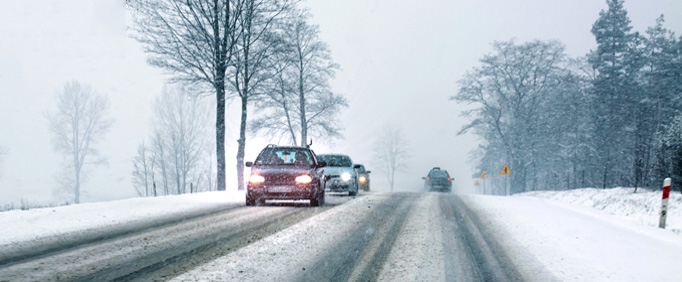
As Oklahoma’s weather took a drastic turn on Tuesday morning, experts are warning drivers to use extra precaution on the roadways.
AAA Oklahoma is urging drivers to be prepared for slick roadways and hazardous conditions throughout the state.
“Motorists should heed travel warnings if travel becomes treacherous,” AAA Oklahoma spokeswoman Leslie Gamble said. “Adjust driving behaviors for the conditions and go nowhere – not even a short distance – without a full tank of gas, a fully charged cell phone (loaded with the AAA Mobile App) and a fully stocked emergency kit.”
Before precipitation occurs:
- Park your car inside a garage or under a covered carport.
- Have a plan for roadside assistance if you get stranded due to battery issues.
- Pull windshield wipers away from your windshield to prevent them from freezing to the windshield.
- Make sure your windshield washer solvent is for winter to prevent it from freezing.
AAA offers these tips after icing conditions affect a vehicle:
- Never pour hot water on a windshield or windows, which can cause the glass to break. Instead, use the vehicle defrosters to melt the ice for easier removal.
- Do not continue to push the power window buttons if the window is frozen; it can damage the mechanics and cause the window to break.
- Never use water to thaw frozen locks, instead use deicing products or heat the key and lock with a hair dryer. A lighter can also be used to heat the key.
- If windshield wipers are frozen, use the heater and defroster to melt the ice before turning them on.
While driving in winter weather:
- Slow down, and turn and brake gradually. Adjust your speed to road conditions and leave yourself ample room to stop.
- Do not tailgate. Normal following distances of three to four seconds on dry pavement should be extended to a minimum of eight to ten seconds when driving on slippery surfaces.
- Slow down immediately at the sight of brake lights, fishtailing cars, sideways skids or emergency lights ahead.
- Never use cruise control on slippery roads.
- Black ice typically forms first on shaded area of the road and on bridges. Although the road leading up to the bridge may be fine, the bridge itself could be slick.
- Move over one lane for law enforcement and emergency roadside personnel assisting motorists.
- Carry a winter weather kit in your car with things like a cell phone or car charger, ice scraper, blanket, warm winter clothes, flashlight with extra batteries, jumper cables, a bag of kitty litter, extra snacks and water and reflective triangles or flares.
AAA offers the following tips for braking on ice:
- If you’re approaching a stop sign, traffic light or other area where ice often forms, brake early on clear pavement and reduce your speed.
- In the event of a skid, ease off the accelerator and steer in the direction you want the front of the car to go.
- If your car has an anti-locking braking system, do not remove your foot from the brake during a skid. When you apply the brake hard enough to make the wheels lock momentarily, you will typically feel the brake pedal vibrate. This is normal and the system is working as designed. Do not release pressure on the pedal or attempt to pump the brakes.
- If your car does not have an anti-locking braking system, keep the heel of your foot on the floor and use the ball of your foot to modulate the pressure applied to the brake pedal so the brakes are at the ‘threshold’ of lockup but still rotating.
source:-kfor.c







